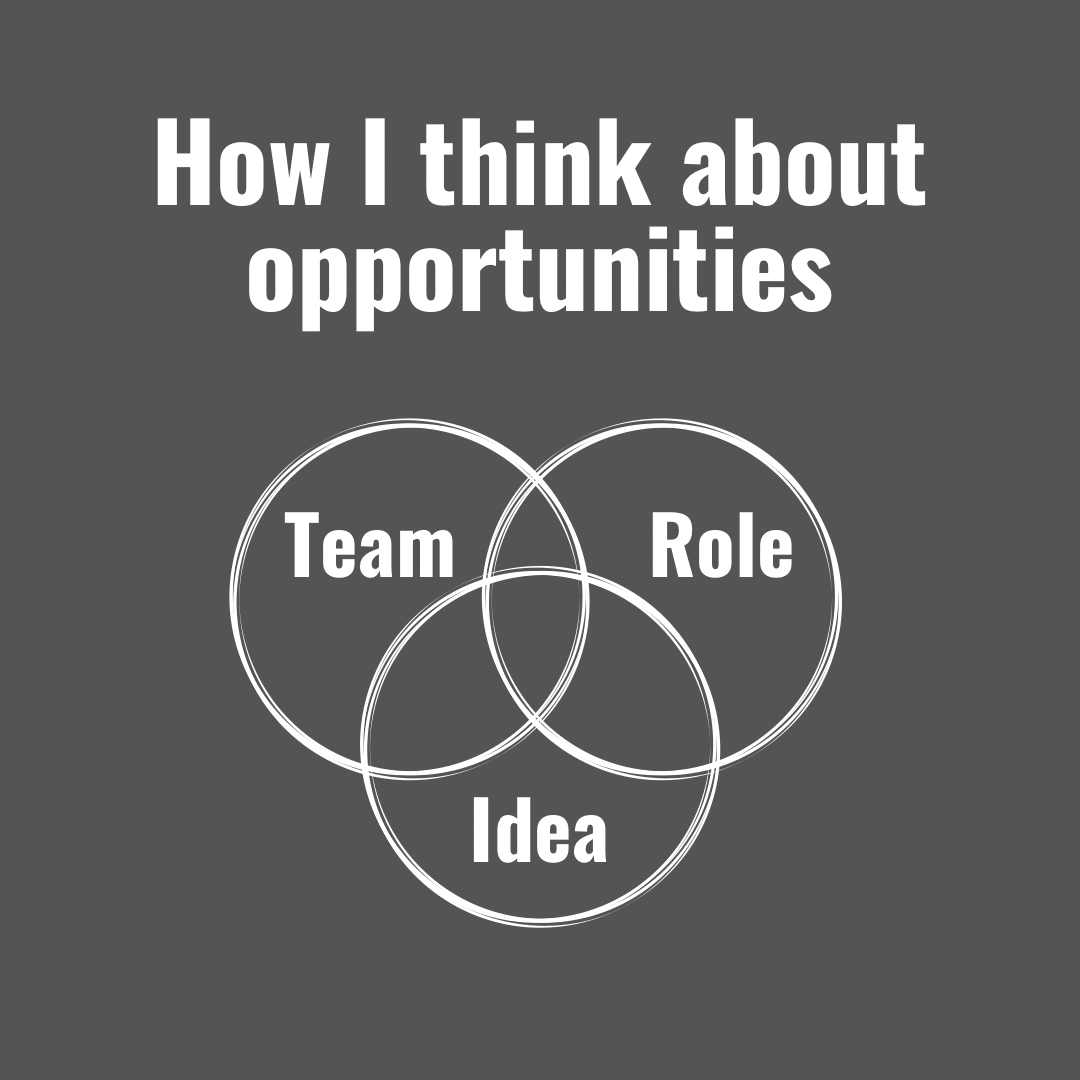How I think about opportunities : A diagram for optimizing investments in energy and expertise.
/Success and a good professional fit require alignment of key criteria
I’ve referenced the Venn diagram above dozens of times. Its strength: simplicity. Its challenge: knowing where to set your overlap criteria because most opportunities don’t offer it all.
The three circles and questions worth answering:
Team: Does the team consist of daring thinkers who are capable of remarkable execution at scale? What are they known for and how do they prove it? How long have they been working together? How would you characterize the team’s culture? Are they good people by the standards important to you? Every aspect of your experience will connect to this.
Role: How are you expected to help the team accomplish its goal? Is this work in your wheelhouse? How important is the role to the success of the team? Is the proposed role at an ideal level relative to your skills and experience? Does the role have upside from a scope, comp, and impact perspective? Are you excited about it? To quote Steve Jobs, “Your work is going to fill a large part of your life, and the only way to be truly satisfied is to do what you believe is great work. And the only way to do great work is to love what you do.”
Idea: Is the core idea new and innovative or in need of resuscitation? How significant is the idea to the company’s top and bottom line? Is the idea in a growth category? Can you relate to the idea? Do you genuinely like it? In this case an idea can apply to an entire business, an org, a product or service, or an initiative. Idea-wise, I’ve had most of my fun on the frontier, not the farm.
Add a data-driven lens
On a scale of 1-5, rank each criteria relative to your goals and expectations. Larger numbers are better. If you’re considering multiple opportunities, compare them against one another both in total and as subsets of two.
For example, if Project A ranks high on Team and Role but low on Idea, will it be worth your time? Will your role enable you to make the Idea more compelling? Is there a future Idea behind the current Idea that’s enough to compensate for a relatively low score? Do you anticipate the Team will continue supporting the Idea?
Each Team + Role + Idea combination is worth evaluating. Your job is to identify the highest individual and combined scores you can because that’s where you’ll find the most overlap and add the most value. Be critical! Don’t self-rationalize by giving points away.
This is about optimizing and not settling
Making circles is easy. Filling them in with informed perspectives gets hard. We know that for most people, a score of 15 (e.g. fully overlapping circles) isn’t possible. For you: What is and why? On a 1-5 scale, I look for totals greater than or equal to 12 with no category scoring lower than 4.
The market is in a weird place right now. Times are getting lean. I hope you have the courage to invest wisely and the foresight to continue making long-term bets aligned with work you’re proud of.
P.S. In case you’re wondering:
According to Wikipedia (reliability 3.8 of 5..?), Venn diagrams were introduced in 1880 by John Venn in a paper entitled "On the Diagrammatic and Mechanical Representation of Propositions and Reasonings" in the Philosophical Magazine and Journal of Science, about the different ways to represent propositions by diagrams.
Make your proposition count.










